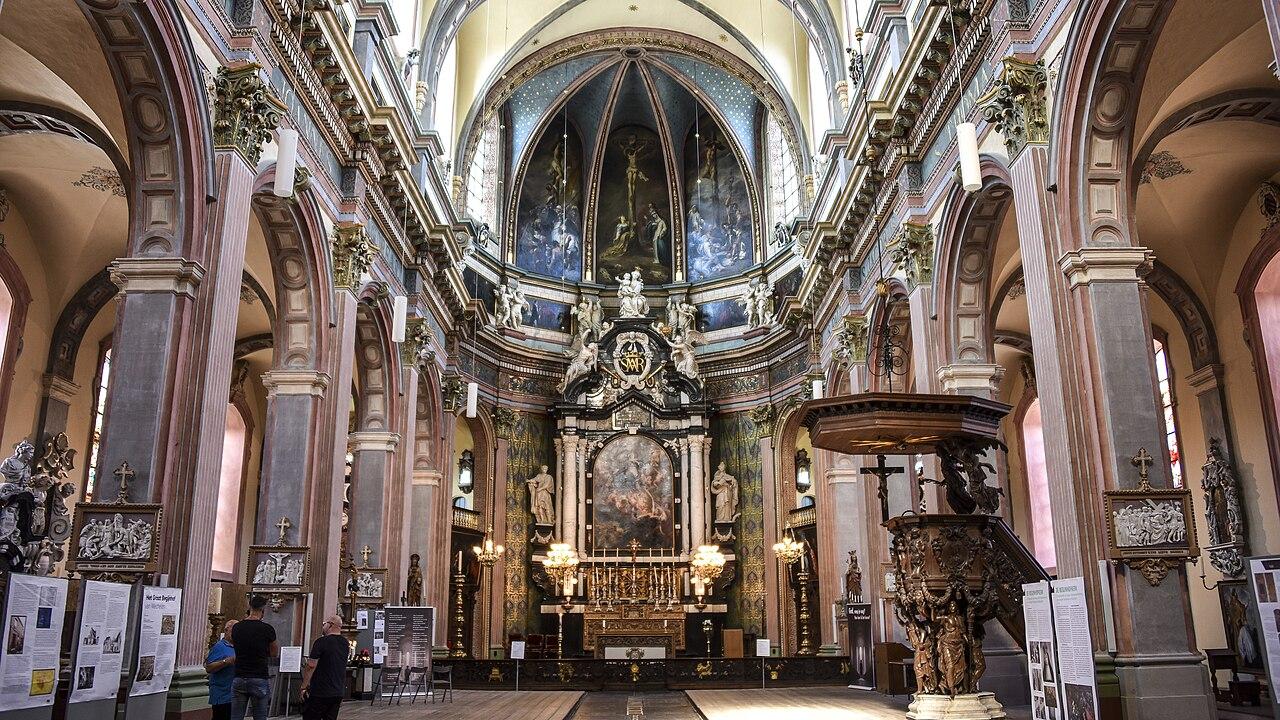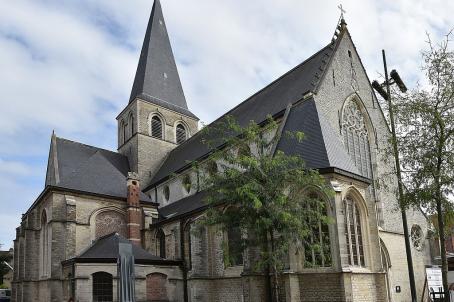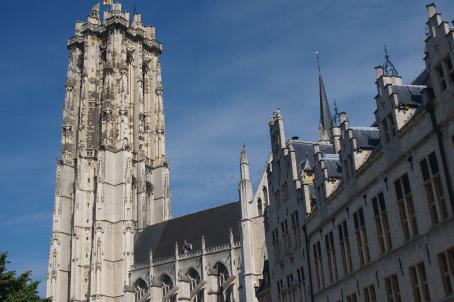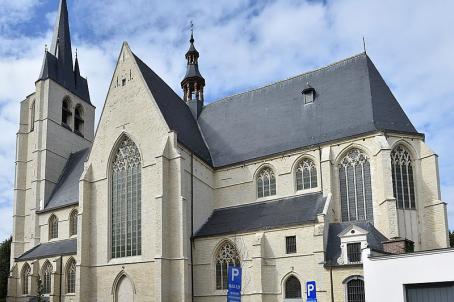Begijnhofkerk (Beguinage Church), Mechelen

The Beguinage Church in Mechelen was built between 1629 and 1647. It was designed by Pieter Huyssens and Jacques Francart. It has a beautiful baroque facade of Italian influence.

The Beguinage Church in Mechelen was built between 1629 and 1647. It was designed by Pieter Huyssens and Jacques Francart. It has a beautiful baroque facade of Italian influence.

This Gothic church was built in the 14th century and thoroughly renovated around 1400-1450. The Fonteskapel (Fontes Chapel) was added in the 16th century and the Sint-Jozefkapel (Saint Joseph Chapel) in 1673. During the 18th century, the church was richly decorated. The moderate style that characterizes the church today is the result of a thorough restoration in the neo-Gorthic tradition during the 19th and 20th century.

St. Rumbold’s Cathedral was built in the thirteenth century. It was known as ‘the church of the archbishops’ because it was larger and more impressive than the other parish churches. Originally there was a triple-nave cruciform church on the site of the cathedral. Much of the interior and iconoclasms were lost to plundering during the 16th century. The interior of the church is magnificent with works by Anthony van Dyck, Michel Coxie, Gaspard de Crayer, and Abraham Janssens. The showpiece is the high altar by Lucas Faydherbe from 1665.

Originally there was only a chapel on the site, which got converted into a parish church halfway the 13th century. In the course of the 15th century, the church was enlarged to a full-fledged Gothic church. The building was gravely damaged after the explosion of Zandpoort in 1546 and by the Geuzen during the 16th century. After this, the church was used as military base and stable over a period of five years. It was rededicated in 1585. In 1645, the church was incorporated into the nearby Orators’ Monastery, which from then on provided the parish services. The building was sold in 1799, but returned to service in 1803 and got restored in 1890.